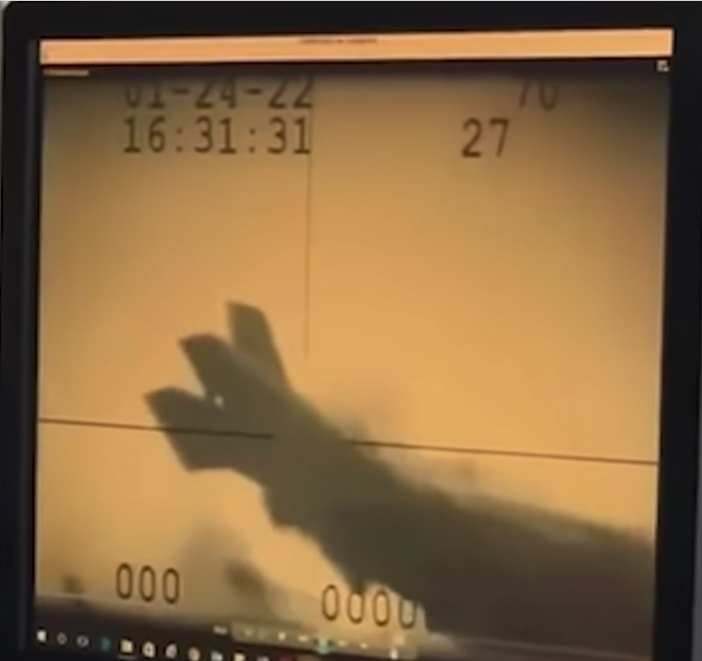Was “Pilot Error” the Root Cause?

F-35C Crashes Aboard USS Carl Vinson (CVN-70)
“This mishap was the result of pilot error.”
That’s what a letter from the Commander of the Seventh Fleet (Vice Adm. Karl Thomas) said. The letter forwarded the accident report to the Commander of Naval Air Forces Pacific.
CLICK HERE for a link to a PDF of the report and the letter.
USNI News summarized the accident from the report as follows:
A 2022 ramp strike aboard the carrier USS Carl Vinson (CVN-70) that injured six sailors and resulted in the loss of an F-35C Lighting II Joint Strike Fighter was due to a mistake by the fighter pilot during landing, an investigation into the Jan. 24, 2022 incident determined.
The junior officer had performed a specialized landing approach to Vinson for the first time, but he did not realize a built-in aid that helped control the plane’s power during landing was switched off. The F-35C made an underpowered approach to the carrier, according to the investigation obtained by USNI News.
By the time the pilot realized his aircraft was underpowered, there wasn’t enough time to stop the aircraft’s nose from striking the back of the flight deck, collapsing the F-35Cs landing gear. The momentum carried the fighter, assigned to the “Argonauts” of Strike Fighter Squadron (VFA) 147, across the Vinson’s deck and into the South China Sea. Flying debris injured five sailors on the deck. The pilot was hurt ejecting from the fighter, according to the investigation.
Was “Pilot Error” the Root Cause?
In the TapRooT® Root Cause Analysis System, “pilot error” would be a Causal Factor and not a root cause. Pilot error is where you would start your root cause analysis.
I’m not a pilot, and I don’t know anything about the automation of an F-35C, but from the accident report, it seems that the pilot thought the aircraft was in an automatic mode that would control the throttles, but it was actually in a manual mode.
The corrective actions recommended in the letters attached to the report called for several upgrades to make the actual mode that the throttles are in more obvious to the pilot and to the LSO on the flight deck.
Thus, this seems like a common human factors problem with an automated system. The user expects the automation to have control, but the automation is in the wrong mode, and the human (the pilot) doesn’t realize the failure of the automation to control things until it is too late.
You can call this human error if you want to blame the pilot, but I would say that it is an automation/displays/controls design issue. It would be analyzed under the Human Engineering portion of the TapRooT® Root Cause Tree® Diagram.
The other significant factor from the accident report was that even though the pilot was fully qualified, he had never attempted a landing (called a Sierra Hotel Break) like this before. One might wonder about the training and practice provided to be a fully qualified pilot if a complex landing maneuver would be used for the first time under stress at sea. This would be analyzed under the Training portion of the TapRooT® Root Cause Tree® Diagram.
Automation-induced errors are becoming more common as we depend on advanced automation in our control systems.
Thus the admiral’s letter might have said:
“This mishap was a result of automation and display technology
combined with insufficient training requirements.”
Read the report and see if you agree.
Find Out More About Advanced Root Cause Analysis
Rather than blaming people for accidents, perhaps a better course of action is to find the accident’s real root causes and develop effective corrective actions. That’s what TapRooT® Root Cause analysis is all about.
To find out more about TapRooT® Root Cause Analysis, we suggest attending one of our advanced root cause analysis courses.
CLICK HERE to view a list of the types of training to choose from.
CLICK HERE for a list of the upcoming public course dates and locations.





Remember 737-MAX
Your comment about similar incident causation involving human/automated interacting systems is right on ?
Comment Quote :-
“Thus, this seems like a common human factors problem with an automated system. The user expects the automation to have control, but the automation is in the wrong mode, and the human (the pilot) doesn’t realize the failure of the automation to control things until it is too late”